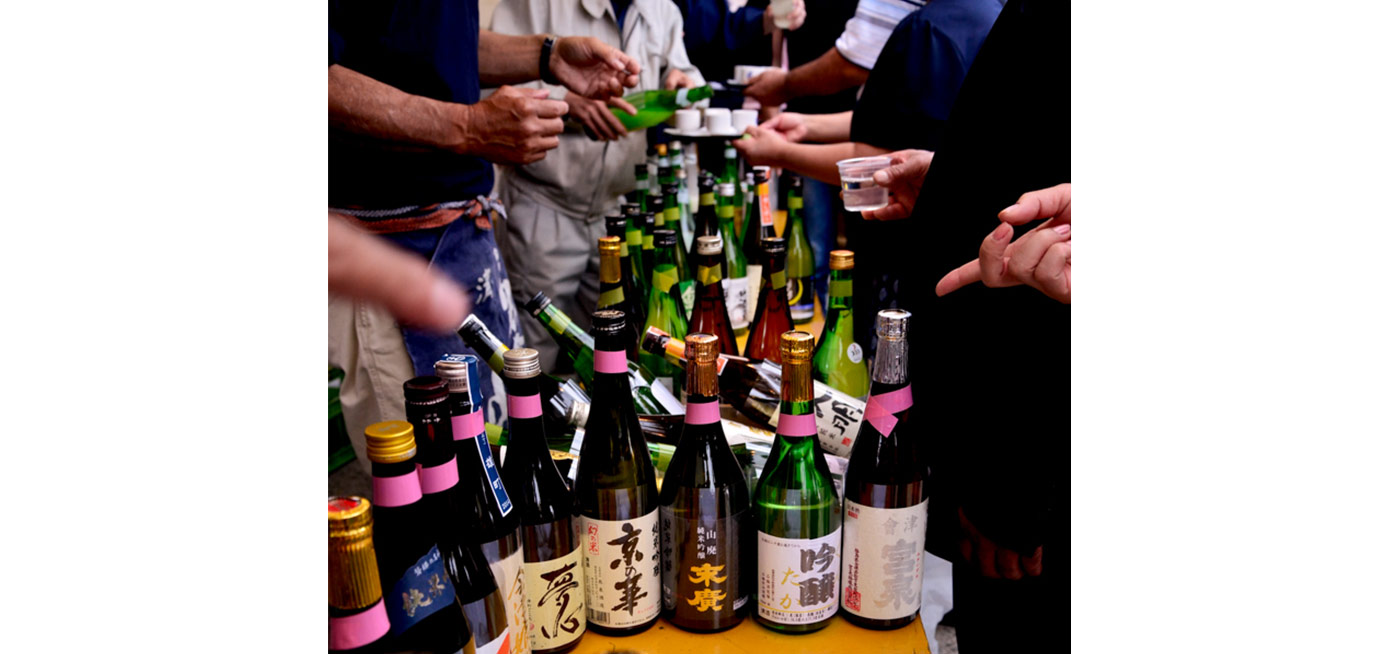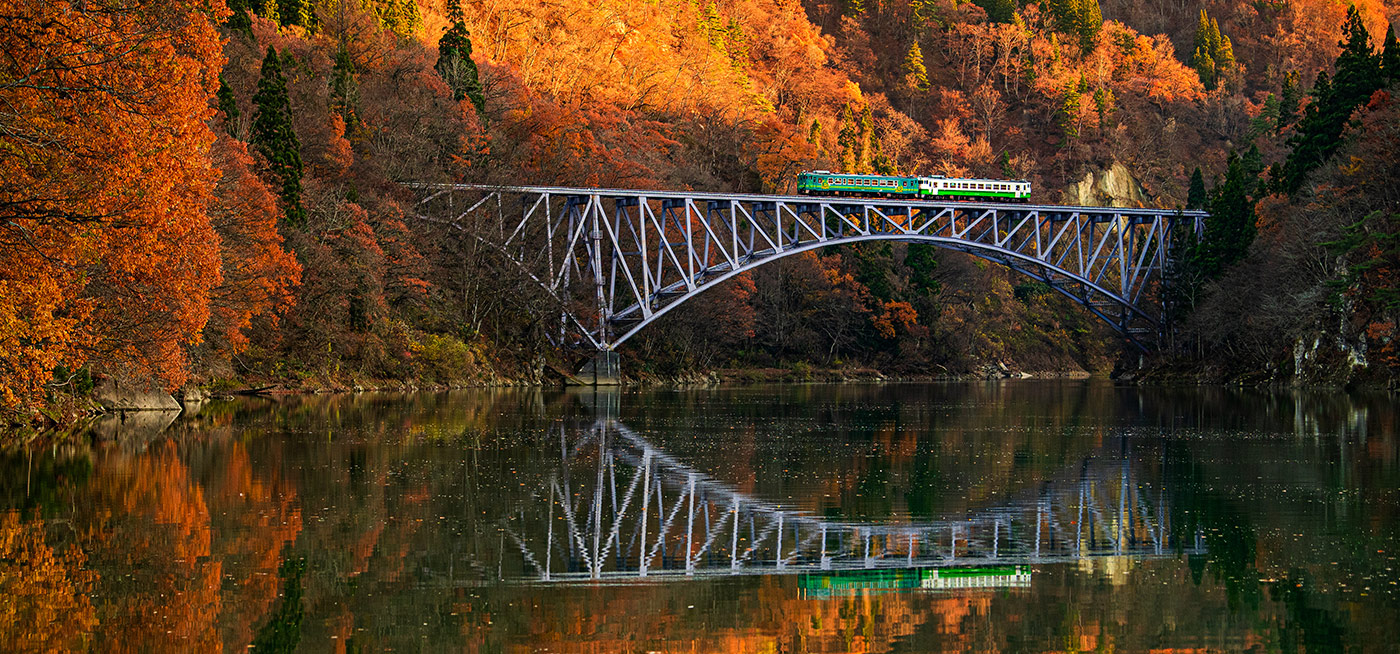When the wandering poet Matsuo Basho travelled north through Japan in 1689, he took 13 days to traverse Fukushima. His famous travelogue Narrow Road to the Deep North described the prefecture's “pure white blossoms,” “lonely temples” and “ancient caves.” One haiku could still capture Fukushima's secluded charms today: “The chestnut by the eaves / In magnificent bloom / Passes unnoticed / By men of this world.”
Despite being the third-largest prefecture in the country, Fukushima was often overlooked by those passing through. But for those willing to slow down, this region between Tokyo and the northern university city of Sendai offers a different side of Japan. Prior to the pandemic, the number of annual visitors to Fukushima was already higher than the days before the 2011 “triple disaster” of earthquake, tsunami and nuclear station accident. These visitors were curious about the region's recovery but also drawn to places like Ouchi-juku, a village filled with thatched roofs and unsealed roads straight out of the Edo period when Basho strolled through.
In the fall, visitors take to mountainous roads lined with fiery autumnal maple leaves or board the stunning Tadami train line. Reopened in October 2022 after 11 years of suspension due to damage from torrential rain in July 2011—just three months after the earthquake—the Tadami line lumbers through curves and over bridges to the resplendent Tsurugajo Castle and the cliff-top Buddhist temple of Enzoji, which has stood sentinel here since 807. It's quite a contrast from most trains in Japan, which are designed for efficiency on the country's vast and intricate rail network.
Many foreigners are lured to stay. Canadian William McMichael arrived in Japan in 2007 and is now an associate professor at Fukushima University International Center. He and his wife had one child before the disaster and another shortly afterwards. They never considered leaving. “I fell in love with Fukushima even more after the disaster,” he says. “At that time, when I went to the supermarket, even though the shopkeepers were struggling themselves, they would not take my money, saying, 'we can all use help one time or another.'“
Just as Mr. McMichael felt welcomed by the locals, now he does the same for new international students at Fukushima University. “There are really beautiful unspoiled Japanese landscapes here, beautiful autumn leaves, kind people, interesting festivals, delicious food,” he says. Most people arrive with little reliable knowledge about Fukushima, he adds, and are inevitably surprised: “They imagine that Fukushima is like a ghost town because of the terrible disaster caused by the tsunami and nuclear accident. Then they see the recovery and the vastness of the prefecture.“
Safer, sweeter produce
Japanese farmers and fishers have a fierce sense of pride, which can spur vigorous debate: Who produces the best rice, the best beef, the freshest fish? The resulting rivalries have gone on for centuries, but on one point, there is little dispute: Fukushima has some of the sweetest peaches anywhere in Japan. A few years ago, one local farmer grew a peach and put it on sale for three million yen (approximately $22,000). It turns out that the peach had a sugar content of 40.5%, well above the normal range of 11-15%.
Other notable Fukushima products include a specialty dried persimmon known as Anpo-gaki and a high-end rice called Fukuwarai. Today, all products and catch from the region are monitored extensively for radiation. “Because of the accident, Fukushima Prefecture has more laboratories for radiation monitoring and other testing than anywhere else,” notes Kentaro Matsuzaki, a peanut farmer in the prefecture. In 2022 the United Kingdom, Indonesia, and Taiwan all lifted or greatly relaxed restrictions on imports from Fukushima.
Fukushima's more than 50 sake breweries also make some of the best sake in all of Japan. “There are many delicious specialties of Fukushima, but if I had to choose one to showcase, I would choose sake,” says Kazuyuki Toshiro, assistant director general of Fukushima's agriculture and forestry planning division. “For the ninth consecutive time, Fukushima [in 2022] took the largest number of gold prizes in the Annual Japan Sake Awards, the largest sake competition in Japan.”

Fukushima is blessed with an abundance of nature and a variety of terrains and climates, from the sea to the mountains, which is a major reason why so many delicious foods, including high-end sake, are produced here. Of course, it's important all food is not only tasty but also safe, and this is also paramount for the fishers on Fukushima's Pacific coast. To that end, the government has stated that contaminated water from the nuclear accident will be treated by ALPS, or advanced liquid processing system, prior to a planned discharge into the Pacific coast. Under supervision of the International Atomic Energy Agency, this water can contain no more than 1,500 becquerels of radioactive material per liter—one-seventh of the level permitted in drinking water by the World Health Organization.
Tourism old and new
Traditional Japanese inns, or ryokan, have been the cornerstone of domestic tourism since Basho's day. They're often located rurally near natural hot-water springs known as onsens. Keiko Ouchi's Kounkaku Inn follows the traditional model, with futons on tatami mat floors and meals delicately presented over several courses.
“We are located in Dake Onsen, which is far from the nuclear power station, but the hardest part was that Fukushima as a whole became a place people did not want to go,” says Ms. Ouchi. “Now we are slowly starting to see people return.”

New forms of tourism are now joining the classic onsen experience, many with direct links to the events of March 2011. The Great East Japan Earthquake and Nuclear Disaster Memorial Museum was opened in 2020. Not unlike the atomic bomb museums in Hiroshima and Nagasaki, the museum takes a sober look at the tragedy, tells the story of the local people, and looks to a brighter future for the region.
While Fukushima has hosted its share of “dark tourism” in which visitors seek out sites of infamous tragedies, local officials are promoting what they call “hope tourism.” “We want people to understand Fukushima through dialogue with people who are taking on the challenges of reconstruction,” says Takeshi Naganuma, deputy director of Fukushima's tourism promotion division. “And to think about the lessons learned from the earthquake and nuclear accident, and how we can break free from the adversity.”
with the Commercial Department of the WALL STREET JOURNAL.
